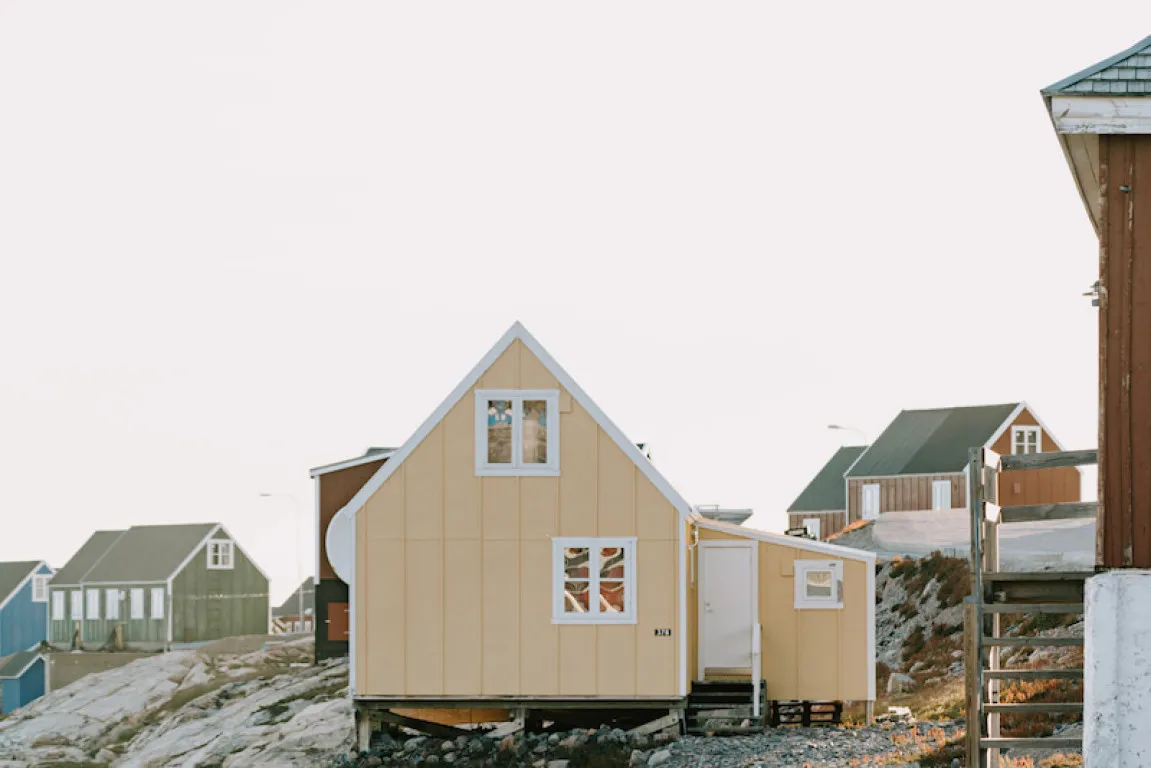An earthquake-resistant house is designed with specialized building structures, materials, and construction techniques that set it apart from traditional homes. Designed to address challenges like shifting soil and seismic activity, building such a home requires careful planning, particularly in selecting materials and construction methods.
The earthquake-resistant house also has its own standards and regulations to ensure safety during emergencies. Read this article until the end to learn more about the structure, design, and how to build an earthquake-resistant house!
Structure and Foundation of Earthquake-Resistant Houses
An earthquake-resistant house consists of six main structural components, i.e. foundation, tie beams, columns, perimeter beams, walls, and roof. These elements must be treated as a cohesive unit, carefully measured and constructed, to ensure they can bear loads evenly and proportionally.
Constructing an earthquake-resistant home is a gradual and step-by-step process. The concrete mix used for pouring must consist of a solid blend of cement, gravel, sand, and water. Also, the column pouring process is done in stages, with each section being poured every 1 meter.
Additionally, the formwork, which acts as the mold for the concrete, must remain in place for at least 3 days after pouring to allow proper curing before it can be removed.
How to Build an Earthquake-Resistant Home the Right Way
If you're planning to build an earthquake-resistant home, here are the essential steps you need to take:
1. Follow the Required Legal and Safety Standards
Earthquake-resistant homes must adhere to strict standards tailored to their specific design. In general, these homes should focus on three key aspects, that is high-quality building materials, strong structural components, and precise concrete pouring.
Before starting construction, you need to first research the environment. Make sure to avoid building in areas with unstable soil, such as landslide-prone regions, riverbanks, eroded areas, or locations near tectonic plate boundaries.
2. Choose Seismic-Grade Materials
Selecting the right materials for an earthquake-resistant home is crucial. For cement, you need to choose Type 1 cement that meets SNI standards. When selecting bricks, choose those with straight edges, high durability, and larger sizes. Meanwhile, for concrete, ensure you understand the correct mixture proportions.
Additionally, the foundation of an earthquake-resistant home needs to be reinforced with strong and angular mountain stones to strengthen the mortar. In this case, mountain stones and river rocks are ideal choices, as they have a solid structure and are highly recommended for foundation work.
Read also: Shear Wall: Functions, Types, and Its Importance in Construction
3. Follow Proper Construction Techniques
The structure of an earthquake-resistant home is designed to withstand seismic activity without collapsing. There are several construction techniques included in earthquake-resistant building standards. As these standards are complex and varied, it is important for you to conduct thorough research beforehand.
4. Use Earthquake-Resistant Structural Designs
The structural design of an earthquake-resistant home is generally symmetric with a strong foundation. This is because all parts of the structure work together to support loads. There are several designs that have been tested by Kementerian PUPR, such as the RIKO, RISHA, and Barrataga houses.
These designs have been tested and applied by Kementerian PUPR in various projects. They are also frequently used as subjects for scientific research in the field of construction.
5. Conduct Regular Maintenance
Even a well-constructed home requires regular inspection, especially in areas prone to soil movement, such as locations near tectonic plate boundaries. Therefore, it is essential to regularly check the strength of the foundation, walls, and roof to prevent potential issues and ensure the home's stability.
Various Earthquake-Resistant House Designs
Here are some earthquake-resistant house designs that you can learn about. These designs have been implemented as residential buildings in earthquake and landslide-prone areas. However, you should still conduct in-depth research on the risk profile of your construction site. Read on for more!
1. Dome House
The dome house design was used for the homes of residents affected by the 2006 Yogyakarta earthquake. You can visit the settlement with this earthquake-resistant architecture in Sleman, Yogyakarta. Additionally, this settlement has now become a tourist destination.
2. Rumah Instan Konvensional (RIKO)
RIKO is the result of a collaborative research innovation aimed at creating earthquake-resistant housing. The Rumah Instan Konvensional was built in Lombok in 2018. Moreover, this earthquake-resistant design is frequently used as a subject for scientific research articles by many universities.
Read also: How to Calculate Foundation Volume Based on Its Type
3. Rumah Instan Sederhana Sehat (RISHA)
RISHA is a ready-to-assemble house that does not require additional bricks or cement. This is an innovation from Puslitbang Kementerian PUPR. The RISHA house was implemented in 2006 in Aceh as a response to the communities affected by the 2004 tsunami disaster.
4. Bangunan Rumah Rakyat Tahan Gempa (Barrataga)
Similar to the RIKO house, Barrataga is an innovative earthquake-resistant housing design concept based on various academic studies, applied by Kementerian PUPR. Barrataga played an important role in the recovery of residential areas following the 2006 Yogyakarta earthquake. This house model has been proven to be safe in withstanding earthquakes.
That was the complete explanation of earthquake-resistant homes, from design ideas, structure, and how to build them. As stated before, earthquake-resistant homes have their own standards and designs that differ from regular homes. Most importantly, these buildings also have their own reinforcements.
Building an earthquake-resistant home requires specific standards and materials, as they have very precise standards. That is why, earthquake-resistant buildings are generally constructed with greater care.
Earthquake-resistant homes require high-quality building materials to comply with the existing regulations for earthquake-resistant structures. For this reason, use the best quality cement, such as Semen Merah Putih Watershield.
Semen Merah Putih Watershield is a versatile cement ideal for various construction needs. This super-premium cement is also suitable for all home renovation needs, including plastering, casting, bricklaying, and concrete deck construction.
Semen Merah Putih Watershield is featured with water-repellent technology, inspired by the taro leaves water-repellency characteristics. This innovative feature helps shield earthquake-resistant homes from water seepage, whether it’s coming from the ground, outside, or inside. The result? A home that stands stronger, lasts longer, and stays protected even in extreme weather conditions.
Make your earthquake-resistant home even more durable with Semen Merah Putih Watershield. Contact us for more information and make sure your earthquake-resistant home is better protected and built to last.
Read also: All About Modular Homes: Types, Advantages, & Disadvantages



